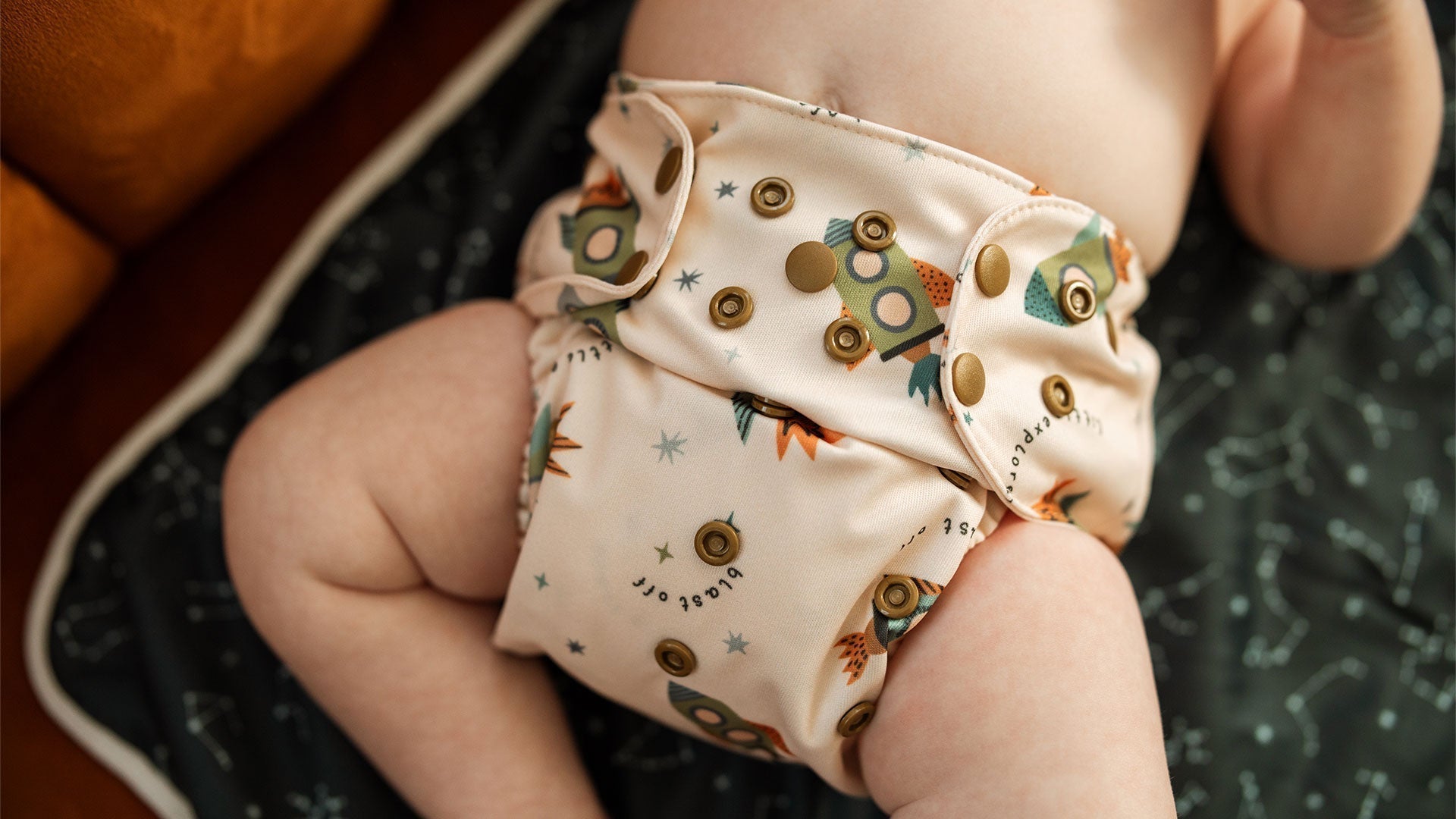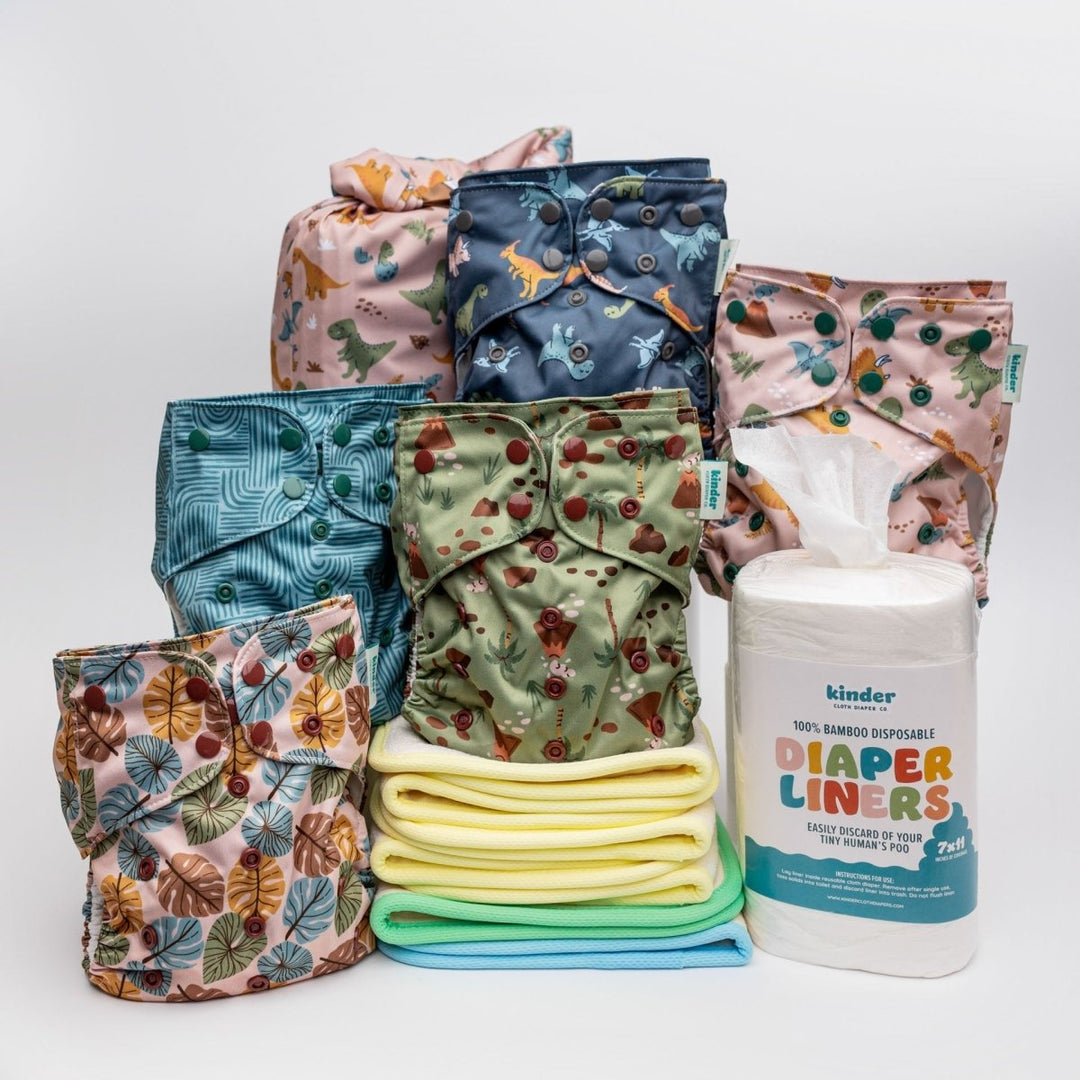Cloth diapering is making a comeback as more parents look for ways to save money, reduce waste, and avoid chemicals when diapering their babies. Here’s a clear breakdown of the three biggest pros and cons of cloth diapering, with a cost comparison between Kinder Cloth Diapers and leading disposable brands.
Pros of Cloth Diapering
1. Save Money Over Time
- While the upfront price of cloth diapers is higher than disposable diapers, the total amount spent over the 2–3 years between birth and potty training is significantly lower. For example, buying Kinder's one-size pocket diapers (around $10–$12 each, sometimes as low as $7 during vault events) and accessories might total $400–$700 depending on your stash size and pattern choices. Disposables from top brands like Pampers and Huggies cost $2,000–$3,000 or more per child. That’s a huge win for family finances and a proven way to save money as a parent—especially if you're planning to have multiple children.
- Even after accounting for laundry costs, cloth diapers deliver long-term savings and can be reused for younger siblings or resold.
Learn more about the real cost of cloth diapering »
2. Use Less Disposables & Reduce Landfill Waste
-
Cloth diapers significantly decreases the number of disposable baby diapers you throw away—one child can use as many as 6,000–9,000 disposable diapers before potty training. Cloth diapering reduces overall landfill waste, carbon footprint, and teaches eco-friendly values early on.
It is estimated that disposable diapers contribute approximately 3.5 to 3.6 million tons of waste to landfills in the United States each year. This represents about 4% of solid waste in landfills. Nearly 20 to 27 billion used disposable diapers are discarded each year, with estimates varying slightly across sources. Diapers are one of the largest single consumer waste items in landfills and can take around 500 years to decompose due to their plastic components It is for these reasons that many parents choose cloth diapers for their environmental impact.

3. Chemical-Free & Gentler for Baby
-
Cloth diapers (especially brands like Kinder) use natural fiber textiles, are free of the absorbent gels, dyes, and fragrance chemicals found in disposables. Fragrance and chemicals like chlorine bleach can be irritating to babies with sensitive skin. Babies in cloth diapers are often changed more frequently, about every 2 hours when awake, which may lead to fewer rashes and allergic reactions. Learn more about diaper rashes and cloth diapers »
Cons of Cloth Diapering
1. More Laundry and Upkeep
-
When using cloth diapers a family can expect to wash an extra 2–3 loads of laundry per week. You will need to wash, dry, and reassemble diapers regularly. While some cloth diapering styles, like "All In Ones" have the absorbency attached, other popular styles like Pocket Diapers need to be "stuffed" or assembled before use. If you already have a busy routine, this extra step can feel inconvenient.
2. Cleanup Can Be Less Convenient
-
When you use disposable diapers, most people just toss them in the trash—easy and quick. But with cloth diapers, you have to take off the poop first and rinse it off, usually by spraying it with a diaper sprayer or dunking the diaper in the toilet before washing. This part can feel a bit messy or icky, and it might make some parents wish for a quicker, cleaner cleanup.
Actually, even with disposable diapers, the poop should ideally be removed and flushed down the toilet before throwing the diaper away. The problem is, almost no one does this. It’s just easier to toss the whole diaper in the trash, even though flushing the poop is better for the environment and plumbing. (Don't believe me, check the packaging on your next pack of disposable diapers!)
3. Higher Upfront Cost
-
A good set of one-size pocket diapers, like Kinder, can cost between $200 and $500 or even more at the start, depending on how many you get and if they’re new or used. For families watching their budget, that first cost can feel like a lot. But the good news is, over time, cloth diapers usually end up being way cheaper than constantly buying disposable diapers.
Cost Comparison Table (Kinder Cloth Diapers vs Top Disposable Brands)
| Diapering Method | Approx Upfront Cost | 3-Year Total Cost (incl. washing) | Pros | Cons |
|---|---|---|---|---|
| Kinder (One-Size Pocket Cloth Diaper) | $200–$500 (diapers + inserts) | $800–$1,300 | Save money, eco-friendly, chemical-free | Laundry, upfront cost, odor cleanup |
| Common Disposables (Pampers, Huggies) | $20–$30 initial box | $2,500–$3,000+ | Easy cleanup, convenient, no laundry | Higher total cost, more landfill waste, chemical exposure |
| Premium Disposable (Hello Bello, Coterie) | $40–$60 initial box (~$0.50 per diaper) | $4,500–$5,000+ | Chemical-free, premium materials, softer and more absorbent | Highest cost, still disposable, convenience cost |
-
Kinder Cloth Diapers: $10–$12 per diaper (lower on sale); can be reused for years.
-
Common disposable diapers (Huggies, Pampers, Up&Up): $0.20–$0.33 per diaper; $2,500–$3,000+ over diapering years.
- Premium disposable diapers (Hello Bello, Coterie, Kudos): $0.50 per diaper; $4,500–$5,000+ over diapering years.
Final Thoughts
Cloth diapering is not for everyone, but it’s a smart option if your primary goals are saving money, reducing your baby’s chemical exposure, and being eco-conscious. The biggest hurdles are the upfront cost and laundry commitment, but with one-size pocket diapers like Kinder Cloth Diapers, you can tailor your stash to your baby and family’s needs.
Choosing between cloth diapers and disposables comes down to your priorities—convenience and flexibility vs. cost savings and sustainability.
If saving money as a parent is at the top of your list, cloth diapering is one of the best ways to make a real difference in your family budget.




